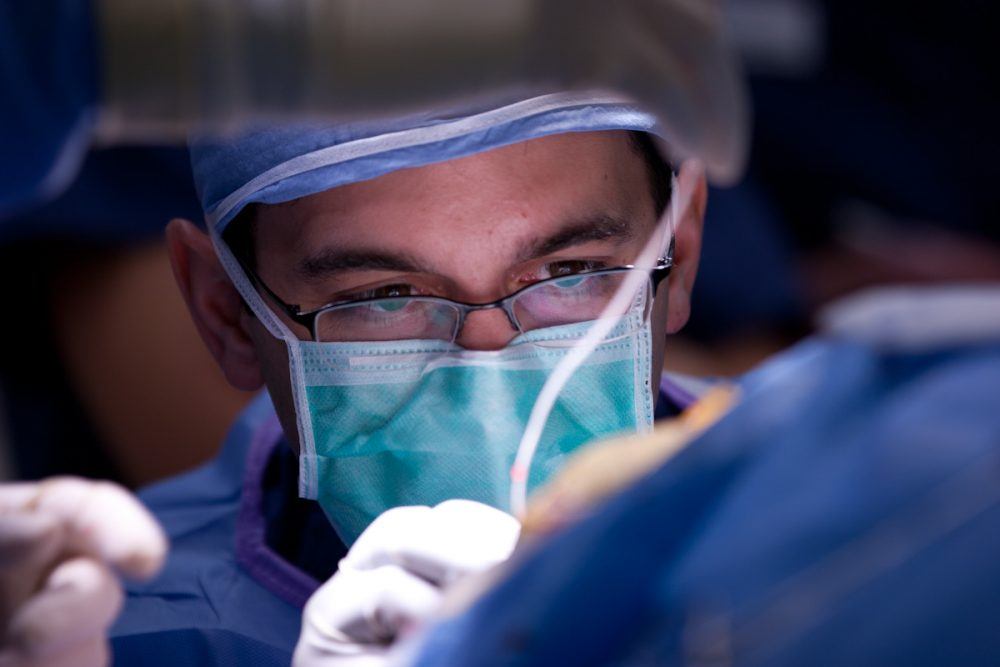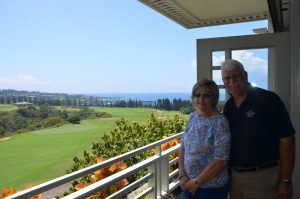
Barrow Neurosurgeon Leads Nation in Deep Brain Stimulation
Called deep brain stimulation, the procedure has been transformed at Barrow from futuristic to realistic, as patients from around the United States and world travel to Barrow to receive a pacemaker for the brain.
Director of Barrow Neurological Institute’s deep brain stimulation (DBS) program, Francisco Ponce, MD, has performed his 500th DBS surgery, making Barrow the medical world’s leader in the use of the treatment that combines neurology, neurosurgery, and electrical engineering. A Chandler woman received the milestone procedure and says she looks forward to reclaiming parts of her life that were stolen by a debilitating movement disorder.
While Barrow’s DBS program has been in existence for a number of years, it has grown rapidly under Dr. Ponce’s direction to perform more DBS procedures than any facility nationwide, with patients coming from 19 states, and two other countries. Most of the surgeries have been done for patients from Barrow’s Muhammad Ali Parkinson Center, which is part of Dignity Health St. Joseph’s Hospital and Medical Center in downtown Phoenix and sees more than 10,000 patient visits annually.
“Barrow has brought DBS to primetime. Performing DBS surgery for 500 patients in a little less than five years is a reflection on Barrow’s commitment to cutting-edge technologies that are changing today’s medicine and the lives of thousands,” said Dr. Ponce.

Dr. Ponce explained that when DBS was first introduced in the 1980s, the surgery could last all day and medical teams would have to break it up into two or three different parts.
“My goal was to streamline the surgery so that it would be less of a psychological hurdle for patients,” he said. “Now, surgery takes less than 2 hours. We have optimized safety and patient comfort while maximizing the beneficial outcomes. This has meant that doctors around the country are increasingly suggesting DBS to their patients and that is what has driven the fast growth of Barrow’s surgical program.”
DBS patient Cyndi Carver could easily thread a needle before her body began to tremble a decade ago from a neurological condition called “essential tremor.” The retired seamstress, who moved from Connecticut to Chandler, Ariz. more than two decades ago, became Dr. Ponce’s 500th DBS patient last month.
“My father had it, and I saw him lose so much as he aged,” says Carver, 67, who has been married to her high school sweetheart, Bob, for nearly 50 years. “Bob and I love to travel, but as the tremor got worse over the last 10 years, I began to lose the ability to do small things that most people take for granted—carrying a glass of water without dumping it, threading a needle, holding a book steady. I couldn’t even hold still long enough to take communion at church. So, I decided I wasn’t going to wait any longer to get help. That’s when I found DBS and Dr. Ponce at Barrow.”
The delicate brain surgery involves placing electrodes deep inside the brain which are connected to a neurostimulator that is placed under the skin below the collar bone. Like a pacemaker for the brain, the neurostimulator is programmed to deliver an electrical current to the very small area impacted by the movement disorder.
Originally, DBS was widely performed while patients were awake on the operating table. During the surgery, the doctors talked to the patient while evaluating the positioning of the electrodes. Recently however, surgeons at Barrow have perfected a new “asleep” method, opting to give general anesthesia and utilize sophisticated imaging in the operating room to target placement of DBS electrodes.
“With new FDA guidelines for DBS treatment for Parkinson’s, patients should be able to get the treatment earlier. With the asleep surgery, this effective therapy becomes more attractive to patients who stand to benefit from it, and we have been leading the charge in increasing the demand for this therapy among patients,” adds Dr. Ponce. “I’m thrilled to see the program help so many people and am excited for the future possibilities of DBS as a treatment for other neurological conditions.”
